The
Melbourne firm known as CONARG (a contraction of Contemporary Architecture Group) was founded in 1953 by
Romanian emigre architect and town planner, Grigore Hirsch (1906-1987)
Born in Bucharest on 8 March 1906, Grigore Mathias Hirsch attended St Joseph's Catholic School and then completed his secondary education with a Baccalareat Diploma from the Seminarium Pedagogicum at the University of Bucharest. In 1924, he transferred to the university's Academy of Architecture, receiving his diploma in 1930. Securing his Identity Card from the Corporation of Architects (the equivalent of ARBV registration), Hirsch immediately commenced private practice in Bucharest. By his own admission, his output was broad and included industrial, commercial and educational projects as well as houses, flats, hostels and clubs. In 1933, he was became in-house architect to the Distrubutia Petrol Company (a Shell subsidiary), and held that position for the next seven years. During that time, Hirsch had success in a string of architectural competitions, winning third prize for his scheme for the Lawyers' Association Building in Bucharest (1932), a special mention in the town planning competition for the Civic Centre at Croydon, England (1935) and a Hors Concours prize for his proposal for the National Opera House at Belgrade, Yugoslavia (1940). It was also during this period that he married Sylvia Kastenbaum (1908-1998); their first child, daughter Miriam, was born in May 1937.
Keenly aware of the changing political situation in Europe in the late 1930s, Hirsch and his family opted to emigrate to Australia. En route, they stopped off in India and decided to stay. For eighteen months, from June 1941 until the end of 1942, Hirsch practised as an architect in Bombay (now Mumbai), where he completed some houses, flats and commercial projects. His practice presumably interrupted by the Second World War, he served with the British Army in India. In 1946, he won first prize in a competition for the new headquarters of the Bengal Central Bank Ltd in Calcutta (now Kolkata); the family subsequently moved to that city, where Hirsch served as the bank's Staff Architect for two years. During 1949, he also took up a position as Visiting Lecturer in the School of Architecture at the newly-opened Sibpore College (now Indian Institute of Engineering Science & Technology) in nearby Howrah. At the end of the year, he resigned from his position with the Bengal Central Bank (as he later put it, due to "a change in the bank's policy") and decided to move to Australia, as he had originally envisaged a decade earlier. His migration was assisted by the fact that he had already become a naturalized British citizen on 4 August 1947, a week prior to Indian independence.
On 17 December 1949, Hirsch flew into Sydney with his daughter Miriam and son Royce; his wife Sylvia had arrived ahead of them. At the time, Hirsch told the press that he hoped to find work that would allow him to make use of his qualifications in town planning. Sure enough, within weeks of his arrival in Melbourne, he secured a position in the office of Frank Heath, a leading Melbourne architect whose practice (unusually for that time) encapsulated town planning. Hirsch spent several years in Heath's office; during 1952, he was involved in the firm's prize-winning (but ultimately abandoned) scheme for a purpose-built Olympic Stadium in Royal Park. From 1950, Hirsch was also a Visiting Lecturer in Melbourne University's School of Architecture.
Becoming registered as an architect in early 1953, Hirsch established his own practice. In what was an unusual move at that time, its title did not reference any personal names: rather, it was simply the Contemporary Architecture Group, subsequently stylised as CONARG. For his staff, he assembled a crack team of recent graduates whom he had presumably known through his teaching duties at the university: Colin McIntosh, Edwin Gillies (later a partner of Gregory Simpson), Hans Lorraine and Peter Wing Shing (for whose parents Hirsch later designed a house in Balwyn North). One of the firm's first projects to attract attention was a scheme for a Roman Catholic church in Brunswick, conceived on a innovative semi-circular plan. Hirsch, who had reportedly converted from Judaism to Roman Catholicism whilst living in India, secured a string of ecclesiastical commissions in Melbourne, including not only churches but also denomination schools and even a convent. According to a former client, Hirsch was disinclined to accept residential commissions, and consequently completed relatively few houses during his career. For his own part, Hirsch and his family initially lived in Mont Albert before moving to Glen Iris in the mid-1950s, where he designed a combined residence and architectural office on a large site at 118 Glen Iris Road.
By the mid-1950s, Conarg's practice has broadened to include hospital projects. Of these, the most notable was the innovative scheme for the Sandringham Memorial Hospital, designed in collaboration with Tasmanian architect J H Esmond Dorney, a former resident of Sandringham. While the bold concept, based on a series of interlocking hexagonal wings, has been credited to Dorney, Hirsch was responsible for the elevational treatment, the preparation of documentation, the supervision of construction, and the design of the detached nurses' home. During the course of the project, Hirsch travelled to Japan to study the latest developments in hospital design; while there, he met several leading architects including Antonin Raymond (who, like Hirsch, had once worked in India) and Kunio Maekawa.
In 1973, Hirsch's practice was reconstituted as a company, Conarg Architects & Town Planners Pty Ltd. Aside from Hirsch, the directors comprised his wife Sylvia, daughter Eleanor (herself a qualified architect) and another architect, Henry Furey. The practice was still in operation a decade later, with a surviving letterhead from 1982 noting that premises at 29-31 Palmerston Crescent, South Melbourne, as well as Hirsch's home office in Glen Iris. Henry Furey left the practice in 1984, and was replaced as director by Ferruchio "Fred" Tonelli.
Grigore Hirsch died on 22 January 1987, survived by his wife, his two daughters and his son.
Born in Bucharest on 8 March 1906, Grigore Mathias Hirsch attended St Joseph's Catholic School and then completed his secondary education with a Baccalareat Diploma from the Seminarium Pedagogicum at the University of Bucharest. In 1924, he transferred to the university's Academy of Architecture, receiving his diploma in 1930. Securing his Identity Card from the Corporation of Architects (the equivalent of ARBV registration), Hirsch immediately commenced private practice in Bucharest. By his own admission, his output was broad and included industrial, commercial and educational projects as well as houses, flats, hostels and clubs. In 1933, he was became in-house architect to the Distrubutia Petrol Company (a Shell subsidiary), and held that position for the next seven years. During that time, Hirsch had success in a string of architectural competitions, winning third prize for his scheme for the Lawyers' Association Building in Bucharest (1932), a special mention in the town planning competition for the Civic Centre at Croydon, England (1935) and a Hors Concours prize for his proposal for the National Opera House at Belgrade, Yugoslavia (1940). It was also during this period that he married Sylvia Kastenbaum (1908-1998); their first child, daughter Miriam, was born in May 1937.
Keenly aware of the changing political situation in Europe in the late 1930s, Hirsch and his family opted to emigrate to Australia. En route, they stopped off in India and decided to stay. For eighteen months, from June 1941 until the end of 1942, Hirsch practised as an architect in Bombay (now Mumbai), where he completed some houses, flats and commercial projects. His practice presumably interrupted by the Second World War, he served with the British Army in India. In 1946, he won first prize in a competition for the new headquarters of the Bengal Central Bank Ltd in Calcutta (now Kolkata); the family subsequently moved to that city, where Hirsch served as the bank's Staff Architect for two years. During 1949, he also took up a position as Visiting Lecturer in the School of Architecture at the newly-opened Sibpore College (now Indian Institute of Engineering Science & Technology) in nearby Howrah. At the end of the year, he resigned from his position with the Bengal Central Bank (as he later put it, due to "a change in the bank's policy") and decided to move to Australia, as he had originally envisaged a decade earlier. His migration was assisted by the fact that he had already become a naturalized British citizen on 4 August 1947, a week prior to Indian independence.
On 17 December 1949, Hirsch flew into Sydney with his daughter Miriam and son Royce; his wife Sylvia had arrived ahead of them. At the time, Hirsch told the press that he hoped to find work that would allow him to make use of his qualifications in town planning. Sure enough, within weeks of his arrival in Melbourne, he secured a position in the office of Frank Heath, a leading Melbourne architect whose practice (unusually for that time) encapsulated town planning. Hirsch spent several years in Heath's office; during 1952, he was involved in the firm's prize-winning (but ultimately abandoned) scheme for a purpose-built Olympic Stadium in Royal Park. From 1950, Hirsch was also a Visiting Lecturer in Melbourne University's School of Architecture.
Becoming registered as an architect in early 1953, Hirsch established his own practice. In what was an unusual move at that time, its title did not reference any personal names: rather, it was simply the Contemporary Architecture Group, subsequently stylised as CONARG. For his staff, he assembled a crack team of recent graduates whom he had presumably known through his teaching duties at the university: Colin McIntosh, Edwin Gillies (later a partner of Gregory Simpson), Hans Lorraine and Peter Wing Shing (for whose parents Hirsch later designed a house in Balwyn North). One of the firm's first projects to attract attention was a scheme for a Roman Catholic church in Brunswick, conceived on a innovative semi-circular plan. Hirsch, who had reportedly converted from Judaism to Roman Catholicism whilst living in India, secured a string of ecclesiastical commissions in Melbourne, including not only churches but also denomination schools and even a convent. According to a former client, Hirsch was disinclined to accept residential commissions, and consequently completed relatively few houses during his career. For his own part, Hirsch and his family initially lived in Mont Albert before moving to Glen Iris in the mid-1950s, where he designed a combined residence and architectural office on a large site at 118 Glen Iris Road.
By the mid-1950s, Conarg's practice has broadened to include hospital projects. Of these, the most notable was the innovative scheme for the Sandringham Memorial Hospital, designed in collaboration with Tasmanian architect J H Esmond Dorney, a former resident of Sandringham. While the bold concept, based on a series of interlocking hexagonal wings, has been credited to Dorney, Hirsch was responsible for the elevational treatment, the preparation of documentation, the supervision of construction, and the design of the detached nurses' home. During the course of the project, Hirsch travelled to Japan to study the latest developments in hospital design; while there, he met several leading architects including Antonin Raymond (who, like Hirsch, had once worked in India) and Kunio Maekawa.
In 1973, Hirsch's practice was reconstituted as a company, Conarg Architects & Town Planners Pty Ltd. Aside from Hirsch, the directors comprised his wife Sylvia, daughter Eleanor (herself a qualified architect) and another architect, Henry Furey. The practice was still in operation a decade later, with a surviving letterhead from 1982 noting that premises at 29-31 Palmerston Crescent, South Melbourne, as well as Hirsch's home office in Glen Iris. Henry Furey left the practice in 1984, and was replaced as director by Ferruchio "Fred" Tonelli.
Grigore Hirsch died on 22 January 1987, survived by his wife, his two daughters and his son.
Select List of Projects
Grigore Hirsch (Europe, 1930-1940
| 1932 1935 1936 1937 1940 | Lawyers' Association Building, Bucharest [competition entry] Civic Centre, Croydon, England [competition entry] Civic centre, Belgrade, Yugoslavia [competition entry] Kincorth Estate, Aberdeen, Scotland [competition entry] National Opera House, Belgrade, Yugoslavia [competition entry] |
Grigore Hirsch (India, 1941-1949)
| 1946 | Headquarters of the Bengal Central Bank Ltd, Kolkata [competition entry] |
Conarg Architects (from 1952)
| 1953 1954 1955 1956 1957 1958 1961 1962 1966 1967 1971 | St Michael's Roman Catholic Church, Ashburton House, Goldthorne Avenue, Kew St Bernard's Roman Catholic Church, Patterson Street, Coburg Factory for Holeproof Ltd, Whitehorse Road, Ringwood Shop and factory for Jacka Dry Cleaners Pty Ltd, Benalla House and office for self, 118 Glen Iris Road, Glen Iris Nurses' home, Wonthaggi & District Hospital, Wonthaggi St Joseph's Roman Catholic School, Chelsea King Catholic Centre, Churchill Highway, Maidstone Macarthur & District Medical Centre, Macarthur House, Lindsay Street, Brighton House, Hodgson Street, Heidelberg House, Canterbury Road, Vermont Shopping centre (Mirama Court), Whitehorse Road, Mitcham Sandringham Memorial Hospital, Bluff Road, Sandringham [with J H Esmond Dorney] House, Simpson Street, Kew St Anthony's Roman Catholc Church, Wallen Road, Hawthorn House, The Esplanade, Mornington Flats, Lansell Road, Toorak House, Mountainview Road, Balwyn North Flats, Falls Creek Ski Village House, Roseland Court, Doncaster |
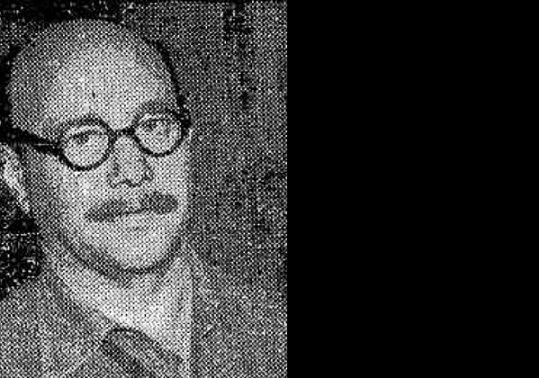 | |
| Grigore Hirsch upon arrival in Australia, December 1949 |
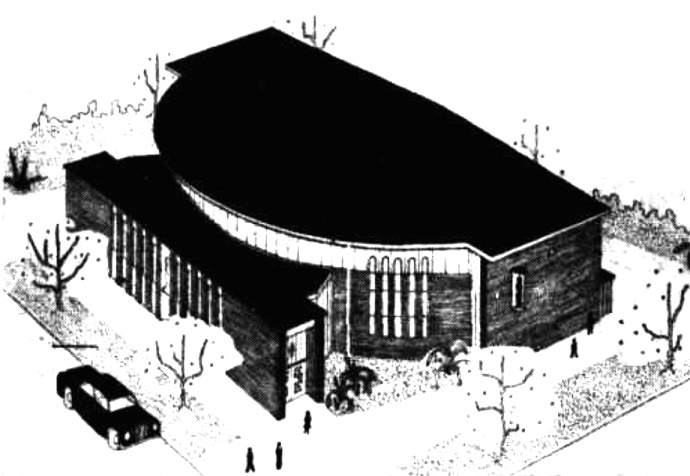 | |
| St Bernard's Roman Catholic Church, Coburg (1954) |
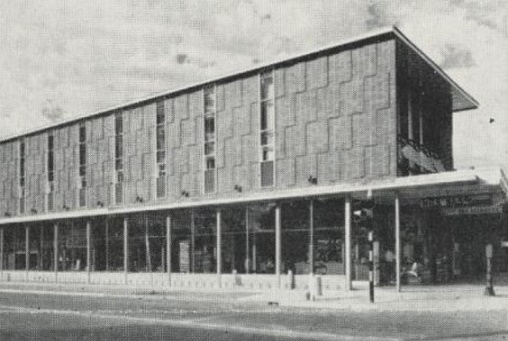 | |
| Mirama Court Shopping Centre, Mitcham (1957) |
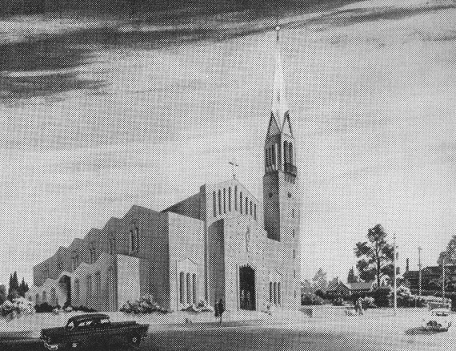 | |
| St Anthony's Church, Wallen Road, Hawthorn (1961) |
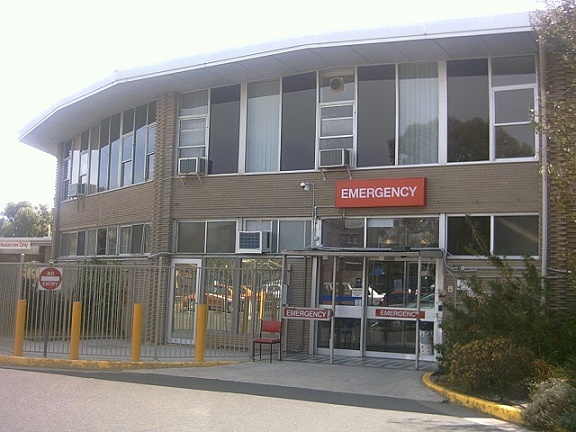 | |
| Sandringham Memorial Hospital, Sandringham (1957-64) (source: photograph by Simon Reeves, 2008) |
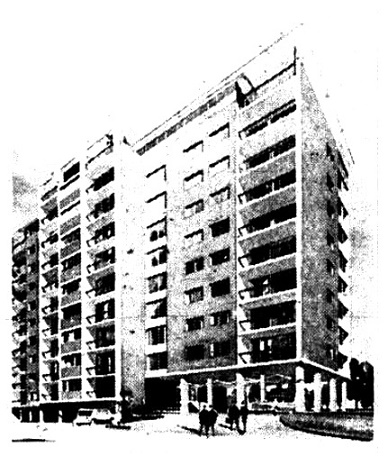 | |
| Highrise flats, Lansell Road, Toorak (1962) |
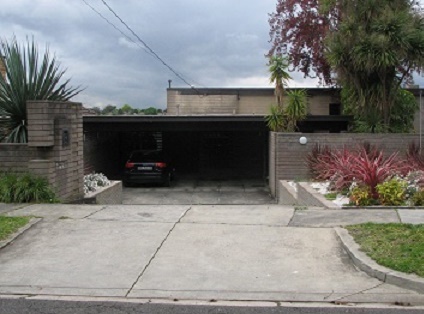 | |
| House, Mountainview Road, Balwyn North (1966) (source: photograph by Built Heritage Pty Ltd, 2012) |
top
